
Filter News
Area of Research
- (-) Energy Science (61)
- Advanced Manufacturing (3)
- Biology and Environment (14)
- Building Technologies (3)
- Computational Engineering (3)
- Computer Science (12)
- Electricity and Smart Grid (1)
- Fusion and Fission (12)
- Fusion Energy (9)
- Isotope Development and Production (1)
- Isotopes (2)
- Materials (19)
- Materials for Computing (3)
- Mathematics (1)
- National Security (13)
- Neutron Science (8)
- Nuclear Science and Technology (7)
- Quantum information Science (4)
- Sensors and Controls (1)
- Supercomputing (50)
News Type
News Topics
- (-) Buildings (21)
- (-) Computer Science (18)
- (-) Fossil Energy (1)
- (-) Fusion (1)
- (-) Grid (24)
- (-) Space Exploration (2)
- 3-D Printing/Advanced Manufacturing (52)
- Advanced Reactors (3)
- Artificial Intelligence (5)
- Big Data (2)
- Bioenergy (16)
- Biology (7)
- Biomedical (4)
- Biotechnology (3)
- Chemical Sciences (11)
- Clean Water (5)
- Composites (14)
- Coronavirus (6)
- Critical Materials (8)
- Cybersecurity (3)
- Energy Storage (47)
- Environment (28)
- Exascale Computing (2)
- Frontier (1)
- High-Performance Computing (3)
- Hydropower (2)
- Isotopes (1)
- Machine Learning (6)
- Materials (29)
- Materials Science (20)
- Mathematics (1)
- Mercury (2)
- Microscopy (6)
- Molten Salt (1)
- Nanotechnology (6)
- National Security (4)
- Neutron Science (7)
- Nuclear Energy (5)
- Partnerships (8)
- Physics (1)
- Polymers (10)
- Quantum Science (1)
- Security (3)
- Simulation (2)
- Statistics (1)
- Summit (2)
- Transportation (43)
Media Contacts
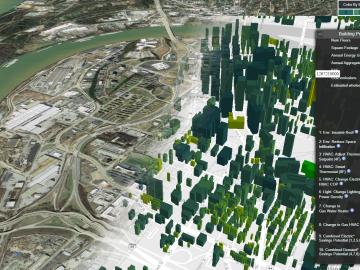
A new tool that simulates the energy profile of every building in America will give homeowners, utilities and companies a quick way to determine energy use and cost-effective retrofits that can reduce energy and carbon emissions.

A research team at Oak Ridge National Laboratory have 3D printed a thermal protection shield, or TPS, for a capsule that will launch with the Cygnus cargo spacecraft as part of the supply mission to the International Space Station.

Researchers at Oak Ridge National Laboratory have developed a nationwide modeling tool to help infrastructure planners decide where and when to locate electric vehicle charging stations along interstate highways. The goal is to encourage the adoption of EVs for cross-country travel.
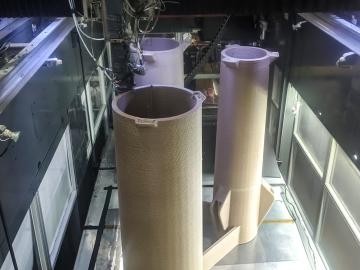
A team of researchers at Oak Ridge National Laboratory demonstrated the ability to additively manufacture power poles from bioderived and recycled materials, which could more quickly restore electricity after natural disasters.
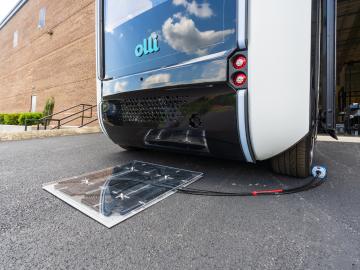
Oak Ridge National Laboratory researchers demonstrated their wireless charging technology on an autonomous electric vehicle for the first time in a project with Local Motors.

Oak Ridge National Laboratory researchers designed and field-tested an algorithm that could help homeowners maintain comfortable temperatures year-round while minimizing utility costs.

Six science and technology innovators from across the United States will join the fifth cohort of Oak Ridge National Laboratory’s Innovation Crossroads program in June.
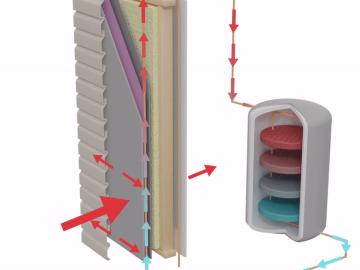
Researchers at Oak Ridge National Laboratory have developed a novel envelope system that diverts heat or coolness away from a building and stores it for future use.

A team of researchers at Oak Ridge National Laboratory has developed a method to detect and measure air leaking from a building’s walls and roof that is quicker, cheaper and less disruptive to occupants.
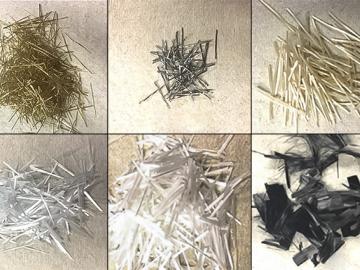
A team of researchers at Oak Ridge National Laboratory and the University of Tennessee have developed a concrete mix that demonstrated high early strength within six hours of mixing, potentially doubling the production capacity for the precast industry.


